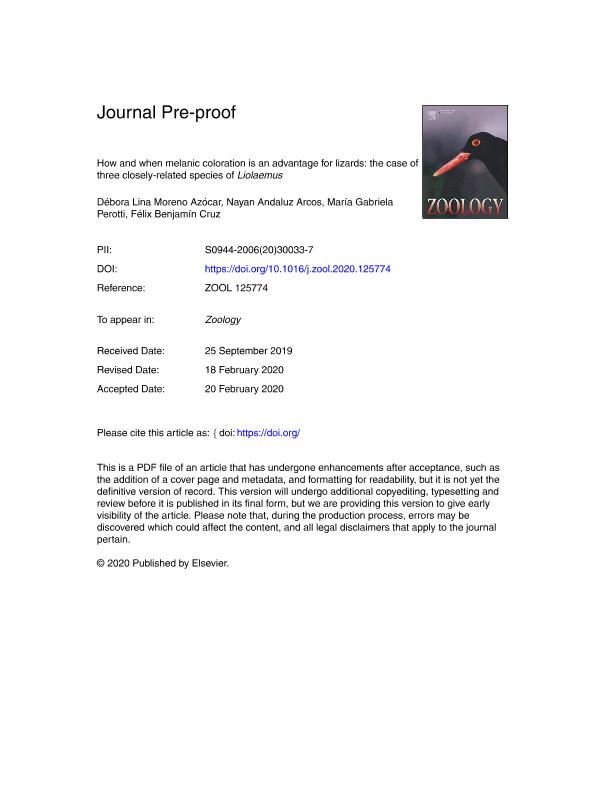Artículo
How and when melanic coloration is an advantage for lizards: the case of three closely-related species of Liolaemus
Fecha de publicación:
08/2020
Editorial:
Elsevier Gmbh
Revista:
Zoology
ISSN:
0944-2006
Idioma:
Inglés
Tipo de recurso:
Artículo publicado
Clasificación temática:
Resumen
Body temperature affects various aspects of ectotherm biology. Reptiles, as ectotherms, gain and control their temperature mainly through behavioural adjustments, although some body traits may also be advantageous. According to the thermal melanism hypothesis (TMH) dark colour may be thermally advantageous in cold environments. Additionally, differences in thermoregulatory capacity may also affect performance. We analysed the role of melanism in the thermoregulation and sprint speed performance of three species of Liolaemus lizards from Argentinean Patagonia. Liolaemus shitan, L. elongatus and L. gununakuna are phylogenetically close, with similar body sizes and life history traits, but differ in their melanic colouration, L. shitan being the darkest and L. gununakuna the lightest species. We estimated sprint speed performance curves and heating rates, and recorded final body temperature and sprint speed achieved after a fixed heating time, from two different initial body temperatures, and with and without movement restriction. Performance curves were similar for all the species, but for L. gununakuna the curve was more flattened. Darker species showed faster heating rates, ran faster after fixed heating trials at the lowest temperature, and reached higher body temperatures than L. gununakuna, but this was compensated for by behavioural adjustments of the lighter lizards. Similarity of sprint speed performance may be due to the conservative nature of this character in these species, while variation in heating ability, particularly when starting from low temperatures, may reflect plasticity in this trait. The latter provides support for the TMH in these lizards, as melanism helps them increase their body temperature. This may be especially advantageous at the beginning of the day or on cloudy days, when temperatures are lower.
Archivos asociados
Licencia
Identificadores
Colecciones
Articulos(INIBIOMA)
Articulos de INST. DE INVEST.EN BIODIVERSIDAD Y MEDIOAMBIENTE
Articulos de INST. DE INVEST.EN BIODIVERSIDAD Y MEDIOAMBIENTE
Citación
Moreno Azócar, Débora Lina; Arcos, Nayan Andaluz; Perotti, Maria Gabriela; Cruz, Felix Benjamin; How and when melanic coloration is an advantage for lizards: the case of three closely-related species of Liolaemus; Elsevier Gmbh; Zoology; 141; 125774; 8-2020; 1-12
Compartir
Altmétricas




